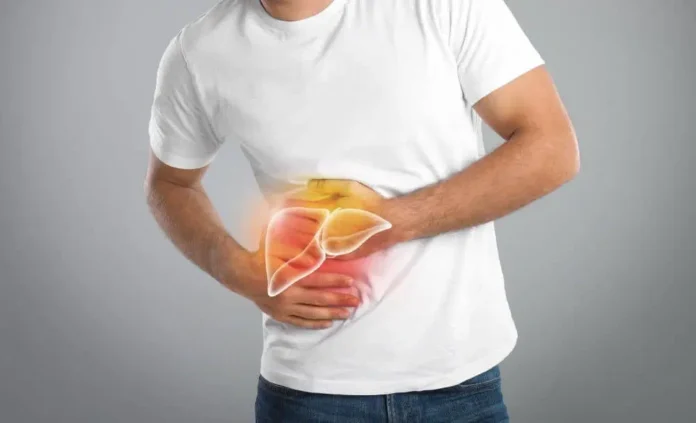Fatty liver disease, also known as hepatic steatosis, occurs when fat builds up in the liver. It can become serious and lead to more severe health issues through the following progression:
- Simple Fatty Liver (Steatosis):
- Initially, fat accumulates in the liver cells without causing significant damage.
- Often asymptomatic and can be detected through imaging tests.
- Non-Alcoholic Steatohepatitis (NASH):
- If the fat accumulation continues, it can lead to inflammation and damage to liver cells.
- Symptoms may include fatigue, weakness, weight loss, and abdominal pain.
- NASH increases the risk of developing fibrosis.
- Fibrosis:
- Persistent inflammation causes scar tissue to form in the liver.
- This scar tissue replaces healthy liver tissue, making it harder for the liver to function properly.
- Symptoms may still be mild or non-existent.
- Cirrhosis:
- Extensive fibrosis leads to cirrhosis, where the liver is severely scarred and its structure is altered.
- Symptoms include jaundice (yellowing of the skin and eyes), easy bruising and bleeding, fluid accumulation in the abdomen (ascites), and confusion or encephalopathy.
- Cirrhosis significantly impairs liver function and increases the risk of liver failure.
- Liver Cancer:
- Chronic inflammation and cirrhosis can increase the risk of developing liver cancer (hepatocellular carcinoma).
- Liver cancer often has a poor prognosis and is challenging to treat.
- Liver Failure:
- Advanced cirrhosis can lead to liver failure, where the liver can no longer perform its vital functions.
- This condition is life-threatening and may require a liver transplant.
Factors that increase the risk of fatty liver disease progressing to a more serious form include:
- Obesity: Excess weight increases fat accumulation in the liver.
- Type 2 Diabetes: High blood sugar levels contribute to liver fat.
- High Cholesterol and Triglycerides: Elevated blood lipids can worsen liver fat accumulation.
- Metabolic Syndrome: A combination of risk factors, including obesity, high blood pressure, and insulin resistance.
- Poor Diet: Diets high in sugar, refined carbohydrates, and unhealthy fats can contribute to liver fat.
- Sedentary Lifestyle: Lack of physical activity can worsen liver fat and overall health.
Prevention and management strategies include:
- Healthy Diet: Consuming a balanced diet rich in fruits, vegetables, whole grains, and lean proteins.
- Regular Exercise: Engaging in regular physical activity to maintain a healthy weight and improve liver health.
- Weight Loss: Losing weight can reduce liver fat and inflammation.
- Managing Diabetes and Cholesterol: Keeping blood sugar and lipid levels under control.
- Avoiding Alcohol: Alcohol can exacerbate liver damage and should be avoided or minimized.
Early detection and lifestyle changes can help prevent fatty liver disease from progressing to more serious forms. Regular medical check-ups and monitoring are essential for managing the condition.



